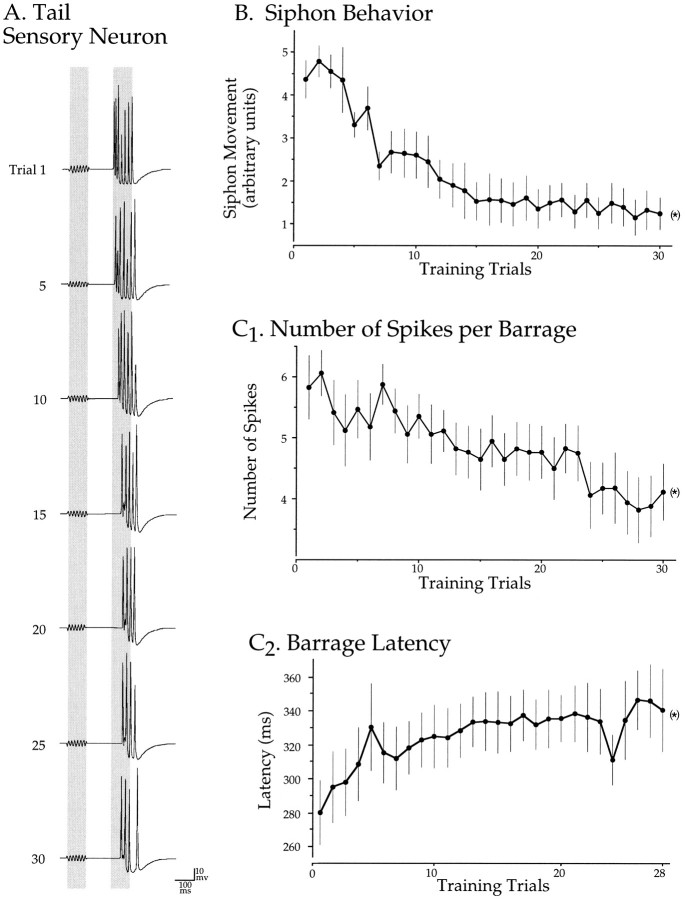Fig. 5.
Tail sensory neuron responses are altered by habituation training. A, Representative sensory neuron responses to training by weak tail shock. Shaded vertical bars illustrate that (1) action potential barrage is of the same duration as the stimulus pulse (first bar encompasses the stimulus artifact) and (2) sensory neuron response latency increases during training. Note also the reduction in spike number (see below).B, Siphon withdrawal habituates during training. Siphon responses were monitored together with cellular responses, and for clarity are replotted here from Figure 4A. C1, Group data show that during training, the number of sensory neuron action potentials per barrage decreases significantly. C2, Group data show that during training the sensory neuron response latency, measured from stimulus onset to response onset, increases significantly. See legend to Figure 2 for statistical significance indicated by asterisks.

